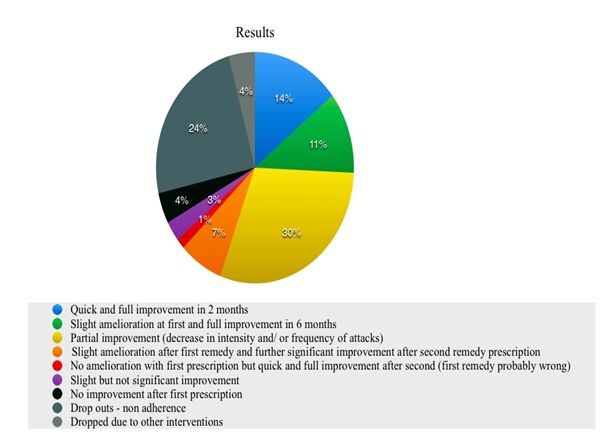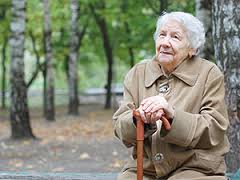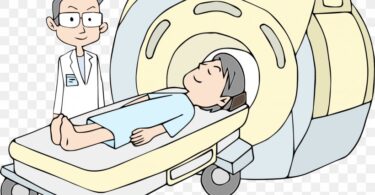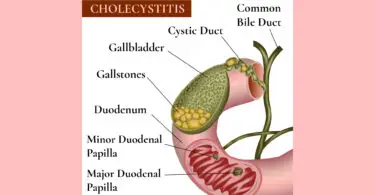Luisa Ferla1, Aishwarya Madhusudhan2, Maria C Bosco3, Seema Mahesh4, 5, George Vithoulkas6
[Presented at the 5th Congress of Piemonte (Turin Region) Homeopathic group and at the 16th AMIAR Congress (Acupuncture and Non-Conventional Medicines in Neurological Diseases)].
1Azienda sanitaria locale TO4 di Ciriè, Chivasso e Ivrea,
Department of Ivrea, Chivasso, Italy
Email: [email protected]
2 Government Homeopathic Medical College and Hospital,
Bangalore, India
3ASL TO4 (local sanitary department)
Chivasso, Italy
4Taylor’s University School of Medicine
Malaysia
5Centre for Classical Homeopathy
Bangalore, India
email: [email protected], [email protected]
6International Academy of Classical Homeopathy
Greece
Keywords
Pediatric headache, migraine, homeopathic treatment
Background
Pediatric headache is a common condition, difficult to diagnose and or manage. The International Classification of Headache Disorders (ICHD) categorizes headaches as primary (migraine, tension-type headaches – focus of our study), secondary (attributing to infections, trauma etc.) and painful cranial neuropathies and other facial pain1.
Conventional management largely includes prophylactic and abortive strategies, focusing chiefly on reducing the frequency or severity of the condition, with drugs such as NSAID’s and Triptans2. Though effective, they often produce varied adverse systemic outcomes3,4.
Data on long-term prognosis in pediatric headache is lacking and the short-term prognosis with prophylactic management is being considered favorable; It is likely that the long-term prognosis has not been studied in this age group.
Classical homeopathy treats a person in an integrated manner. Homeopathy provides the insight that mechanisms responsible for generating a complex disorder, such as migraine, are not simple and that analgesia is just one of the requirements in these cases. Homeopathy aims at switching the immune mechanism back to what it was before the onset of the condition such that multiple tiers of this disease are addressed simultaneously.
There have been studies conducted previously regarding the effect of homeopathy on headaches, but few were designed and executed well. Studies need to adhere strictly to homeopathic laws, and failure to do so will not yield reliable data5. This study examines findings from a clinical practice that has followed the rules strictly and thus has dependable data6,7.
Aim of Study
The aim of the present study was to retrospectively analyze the therapeutic results of individualized classical homeopathic treatment in young patients with chronic headaches who did not respond to conventional therapy and to magnesium supplement, in the Homeopathy Department of Ivrea Hospital, Italy.
The study:
The study participants were 70 young Italian patients (3-18 years of age) with headaches that did not respond to conventional medicines and magnesium supplements, with most of them resorting to NSAIDS during attacks.
All of the patients were treated with magnesium or magnesium + melatonin prophylaxis for several months with partial or no results and opted for homeopathic therapy. They received homeopathic treatment in the Classical Homeopathy Department of Ivrea Hospital for at least one year.
Patients who resorted to other treatments during the homeopathic therapy or took vaccinations were dropped from the study as they would confound the results. Therefore 2 patients who were vaccinated and one patient who took antibiotics during the study period were dropped.
17 patients (24%) did not adhere to the treatment; the reason could not be ascertained. The final two year follow up assessment was made for 50 patients. This consisted of 35 girls (70%) and 15 boys (30%) with an average age of 11 years.
Of the 50 patients who received homeopathic treatment; 26 suffered from weekly headaches, whose frequency was at least 2 or more episodes/week, 15 had suffered from chronic daily headache from one year or more, 5 from chronic headache from 2 to 5 years, 3 with severe NSAIDs –resistant headache, one suffered migraine with aura.
Diagnosis: Headache diagnosis was made according to the International Classification of Headache Disorders criteria (ICHD-3, 2018)1,8.
Prescription: Individualized homeopathic medicines were given. No other drugs or therapeutic solutions were prescribed, nor were any dietetic restrictions made.
Classical homeopathic rules were carefully followed in this study9,10. There were no restrictions regarding the remedy prescribed, so individualization could be accurate. A provision was made for certain phenomena, which are expected during the follow up of homeopathic therapy such as initial aggravation and relapse of old complaints. This was clearly specified in order to not misinterpret these as adverse events. The patients were followed up for a long period in order to appreciate the changes and stability.
The 1st follow-up was made two months after the prescription, and the following after two, three or six months depending on the frequency of attacks.
All of the patients were followed up for at least one year and some were followed for two or more years. The results in this study were summarized at the end of two years (Table 1).
Parents were asked to keep a calendar of attacks. The evaluation was very simple and was given at every six months; The patient or the guardian was shown a visual analogue scale depicting severity of pain from 1 to 5, 1 being no pain and 5 being very painful. They pointed to the most appropriate emoticon.
Results at the end of homeopathic treatment: (Figure 1)
- 10 cases (20% of patients) had quick and full improvement (80% amelioration or total remission of symptoms) after two months.
- 8 cases (16% of patients) had slight amelioration at 1st follow-up but had almost complete remission (80% improvement) of symptoms after 6 months.
- 21 cases (42%) had an improvement of 50% to 60% (decrease in intensity and/or frequency of attacks).
- 5 cases (10%) had slight amelioration after the 1st prescription and further amelioration (70%) after the prescription of a second remedy.
- 1 case (2%) had no amelioration after the first prescription but quick and full improvement after the second remedy (1st remedy was probably wrong).
- 3 cases (6%) had no improvement after the 1st remedy (1 case had significant improvement—between 70-80%—after the 2nd prescription, the others did not).
- 2 cases (4%) had slight but not significant amelioration (20-30%)
Discussion
Homeopathic therapy abides to the timeless laws of nature and achieves cure by strengthening the body’s immune system through meticulous selection of an individualized remedy. Disease conditions, especially in chronic cases, are understood by systematic questioning of the patients, to spot the predisposition of the defense mechanism viz. genetic makeup and the epigenetic stress (e.g., environmental, physical, psychological, drug influence, and infections).
The practical application of aforesaid homeopathic laws and principles are perspicuously demonstrated in these cases. The foremost, every single case required different individualized remedies. Out of 70 cases, only 5 cases required repetition of the same remedy, out of which, one case due to intervention of antibiotics.
This illustrates that following the classical method of homeopathy is mandatory in treating cases successfully, and untimely repetition of remedies may be detrimental. In the headache cases presented here, 15 cases of headaches had an average suffering from one month to 5years or more; out of which 7 cases recovered producing no headaches during their entire follow-up period, requiring neither a repetition nor a change of remedy; while the remaining cases produced not more than 5 episodes of headache, thereby affirming that homeopathic laws and principles are unchanging.
It is as Kent says, “One who thinks homeopathically, never prescribes to remove a symptom. But, guided by the symptoms he prescribes a remedy no matter what follows. Learn to keep the ideal of homeopathy in mind and in order to do that you will have to rid yourselves of a tremendous amount of inheritance. We have inherited the way to think wrong end to.”11
While mere statistics to the conventional medicine, the results become more comprehensive to us when Theory of Levels of Health is applied12. The cases that are healthier to begin with, present with clear symptoms, and these cases respond quickly, as is apparent with cases that are seen to improve after the first prescription.
However, children with poorer health level required more than one remedy prescribed in the right sequence in order to obtain the same results. There are few cases in this study that displayed ‘no change’, as these children had complicated circumstances, such as added behavioral problems or learning disabilities.
According to the Theory of Levels of Health, the primary pathology, which is the outcome of a much deeper cause in the system, eventually starts responding when these deep-seated situations are addressed (here, behavioral and learning problems). As evidenced in this report, they required about two years of decorous treatment, and eventually the learning disability and behavioral problems began responding positively during the follow-up period.
Conclusions
The results of this retrospective clinical study of 50 children indicate that individualized homeopathic treatment can contribute considerably to the amelioration of chronic headaches in young patients. Furthermore, the co-morbidities associated with these headaches are also alleviated with homeopathic therapy resulting in a better quality of life and fewer school absences.
References
- The International Classification of Headache Disorders – ICHD-3. Accessed July 1, 2021. https://ichd-3.org/
- WP W, S A. Management of children and young people with headache. Arch Dis Child Educ Pract Ed. 2017;102(2):58-65. doi:10.1136/ARCHDISCHILD-2016-311803
- P U, W C, CS C, EL M. Individual non-steroidal anti-inflammatory drugs and risk of acute kidney injury: A systematic review and meta-analysis of observational studies. Eur J Intern Med. 2015;26(4):285-291. doi:10.1016/J.EJIM.2015.03.008
- C E, TE C, E F, B A, NM W. Non-steroidal anti-inflammatory drugs (NSAIDs) for chronic non-cancer pain in children and adolescents. Cochrane database Syst Rev. 2017;8(8). doi:10.1002/14651858.CD012537.PUB2
- Vithoulkas G. Homeopathic treatment of chronic headache: A critique. Homeopathy. 2002;91(1). doi:10.1054/homp.2001.0012
- Danno K, Colas A, Masson JL, Bordet MF. Homeopathic treatment of migraine in children: Results of a prospective, multicenter, observational study. J Altern Complement Med. 2013;19(2):119-123. doi:10.1089/acm.2011.0821
- Witt CM, Lüdtke R, Willich SN. Homeopathic treatment of chronic headache (ICD-9: 784.0) – A prospective observational study with 2-year follow-up. Forsch Komplementarmed. 2009;16(4):227-235. doi:10.1159/000226770
- Munoz-Ceron J, Marin-Careaga V, Peña L, Mutis J, Ortiz G. Headache at the emergency room: Etiologies, diagnostic usefulness of the ICHD 3 criteria, red and green flags. PLoS One. 2019;14(1). doi:10.1371/journal.pone.0208728
- Vithoulkas G and Tiller W. The Science of Homeopathy.; 2009.
- Hahnemann S DR and BW. Organon of Medicine. Kolkata Modern Homeopathic Publication; 2013.
- J.T.Kent. Lectures on Homeopathic Materia Medica. B.Jain Publishers (P) LTD; 2002.
- Vithoulkas G. Levels of Health.; 2017.
Table 1. Details of treatment
| Sex | Age | Initial complaints | Pain level at entry
(Numerical Rating Scale) |
First prescription | Follow-up remedies | Complaint status at 1 year | Pain level at exit
(Numerical Rating Scale) |
Duration of treatment |
| M | 14 | Headache + vertigo | 4 | Sabadilla | Comparatively better | 2 | 1 month | |
| F | 14 | Headache | 4 | Thuja | Natrum muriaticum | Considerable improvement after initial onset of a single episode | 1 | 12 months |
| F | 2 | Headache + severe sleeplessness + frequently wakes up at night screaming | 5 | Cina | Fu1: both sleep and headache improved Fu2: consistent improvement; antibiotics taken few times Fu3: betterment seen physically, emotionally and mentally | 3, 2, 1 | 12 months | |
| F | 12 | Headache | 4 | Calcarephosphorica | Recovered | 1 | 2 months | |
| F | 12 | Headache | 4 | Natrum muriaticum | Recovered | 1 | 2 months | |
| F | 15 | Headache + behavioral problems | 4 | Natrum sulphuricum | Natrum muriaticum | No change | 4 | 2 months |
| F | 17 | Headache | 4 | Silicea | Slight amelioration | 3 | 2 months | |
| M | 12 | Headache | 5 | Magnesia muriatica | Better by 55% | 3 | 2 months | |
| F | 10 | Chronic daily headache | 4 | Lachesis | Only 5 episodes in 2 months. . | 2 | 2 months | |
| F | 9 | Headache for 2 years | 4 | Sepia | Better by 60% | 2 | 2 months | |
| F | 10 | Headache | 4 | Pulsatilla | No change | 4 | 2 months | |
| F | 11 | Chronic daily headache | 5 | Natrum carbonicum | Slightly better | 3 | 2 months | |
| F | 8 | Chronic daily headache | 4 | Phosphorus | Comparatively better | 2 | 2 months | |
| M | 6 | Intense headache | 6 | Belladonna | Strong amelioration | 2 | 2 months | |
| M | 10 | Migraine with aura + trembling in upper limbs | 4 | Phosphorus | Only 2 episodes regressed. Remedy repeated. | 2 | 2 months | |
| M | 10 | Intense headache + pain in stomach | 5 | Hepar sulphuricum | Partially better, headache frequency reduced | 3 | 2 months | |
| M | 13 | Headache + learning difficulties | 5 | Baryta carbonica | Good improvement, only 1 episode of headache. | 3 | 2 months | |
| M | 10 | Headache + allergy | 5 | Gelsemium | Comparatively better | 2 | 2 months | |
| F | 4 | Recurring Headache | 4 | Cocculus | Recovered | 1 | 2 months | |
| F | 12 | Headache + lumbago | 5 | Lac caninum | Intensity reduced | 3 | 2 months | |
| M | 9 | Headache + vomiting | 4 | Phosphorus | Comparatively better | 2 | 2 months | |
| F | 12 | Headache + muscular pain + allergies | 4 | Chamomilla | Natrum muriaticum | Fu1: strong amelioration Fu2: no headache, no muscular pains, allergy better. | 1, 1 | 24 months |
| M | 9 | Headache | 4 | Sulphur | FU1: strong amelioration, with few episodes, cured with remedy repetition. FU2: slight aggravation. FU3: good improvement, only 1 episode in 4 months | 1 | 24 months | |
| F | 9 | Recurring Headache (2 -3/week) | 4 | Phosphorus | Reduced after 15 days; reappeared after 2 years concerning school issues. | 1 | 24 months | |
| F | 11 | Chronic daily headache since 5 years | 5 | Aethusa | Fu1: slightly better Fu2: 3 episodes, better with repetition of remedy
Fu3: no headache in the past 5 months. Consistent improvement. |
3, 2, 1 | 25 months | |
| F | 5 | Chronic daily headache since1 year | 5 | Lachesis | 2 episodes regressed. Remedy repeated, followed by good improvement. | 1 | 3 months | |
| F | 13 | Headache | 4 | Natrum muriaticum | Fu1: frequency reduced Fu2: recovered | 3, 1 | 3 months | |
| M | 12 | School headache | 4 | Magnesia carbonica | No episodes of headache, is well at school | 1 | 3 months | |
| F | 15 | Headache + behavioral problems | 4 | Bryonia | No change | 4 | 3 months | |
| F | 7 | School headache | 4 | Calcareaphosphorica | Is very well | 2 | 3 months | |
| M | 12 | Chronic daily headache, severe | 6 | Natrum muriaticum | Recovered | 1 | 3 months | |
| F | 10 | Headache + nausea | 4 | Lac defloratum | Comparatively better | 2 | 3 months | |
| F | 11 | Chronic daily headache | 5 | Lac caninum | Comparatively better | 2 | 3 months | |
| M | 11 | Chronic daily headache + daily abdominal pain | 4 | Magnesia muriatica | 3 episodes in 3 months | 2 | 3 months | |
| M | 10 | Chronic daily headache + abdominal pain | 5 | Phosphorus | Comparatively better | 3 | 3 months | |
| F | 14 | Chronic daily headache | 4 | Belladonna | Only 2 episodes | 2 | 3 months | |
| M | 7 | Chronic daily headache | 4 | Tuberculinum | Slightly better | 3 | 3 months | |
| F | 6 | Recurring headache (2 -3/week) | 5 | Sulphuric acid | Lachesis | Fu1: no change Fu2: good improvement | 5, 2 | 4 months |
| F | 13 | Headache | 4 | Graphites | Frequency reduced | 2 | 4 months | |
| F | 13 | Headache | 3 | Carcinosinum | Lycopodium | Comparatively better | 2 | 5 months |
| F | 11 | Chronic daily headache + learning disability + vomiting | 5 | Baryta carbonica | Fu1: comparatively better Fu2: no headache, psychologically well | 2, 1 | 5 months | |
| M | 14 | Headache + OCD | 4 | Stramonium | Fu1: better 50% Fu2: better 80% | 2, 1 | 5 months | |
| M | 9 | Daily headache since a month | 4 | Natrum muriaticum | No headache, generally better | 1 | 5 months | |
| F | 11 | Weekly headache | 4 | Natrum muriaticum | Fu1: one-episode Fu2: recovered | 2, 1 | 5 months | |
| M | 12 | Headache | 5 | Baryta carbonica | Fu1: comparatively better Fu2: one episode | 2, 1 | 5 months | |
| F | 10 | Headache | 4 | Tuberculinum | Phosphorus | Fu1: no headache, is well after one-year Fu2: onset of influenza (cured with Phosphorus) | 2, 1 | 6 months |
| F | 14 | Chronic daily headache since 5 years | 5 | Silicea | Fu1: slightly better Fu2: very much better | 4, 2 | 6 months | |
| M | 18 | Recurring headache (2 -3/week) | 4 | Calcareaphosphorica | Fu1: one episode in 2 months
Fu2: recovered |
2, 1 | 6 months | |
| F | 17 | Headache | 4 | Phosphorus | Phosphoric acid | Frequency reduced | 3 | 7 months |
Fig 1: Analysis of response to treatment






